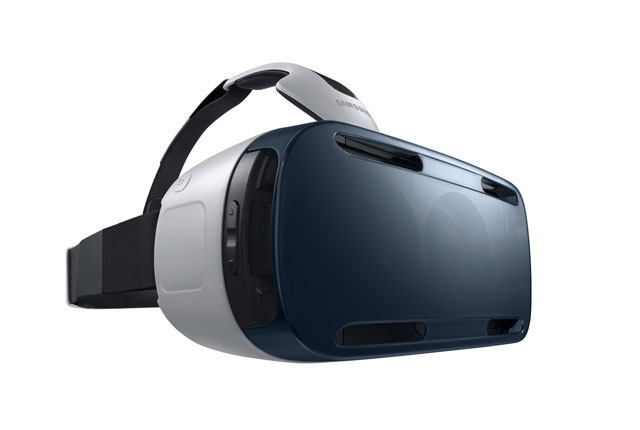 What do Apple, Facebook, Google, Amazon, Microsoft and Samsung all have in common? Sure, all six are technology companies, but the similarity runs much deeper. All six are now battling with each other to dominate the next wave of technology innovation.
What do Apple, Facebook, Google, Amazon, Microsoft and Samsung all have in common? Sure, all six are technology companies, but the similarity runs much deeper. All six are now battling with each other to dominate the next wave of technology innovation.
At the turn of the last century, no one would have conceived of Samsung and Microsoft as possible competitors. The idea of Apple, an ailing computer company, competing with Google, a snot-nosed Internet start-up, would have seemed laughable. And Facebook did not even exist yet.
And yet today, all six companies compete directly with each other in everything from mobile phones to operating systems to cloud services. The market for mobile payment methods alone has attracted tens of billions of dollars in spending from the gang of six.
But the really exciting stuff is in two almost pristine markets: virtual reality (VR) and artificial intelligence (AI). After decades of false starts and disappointments (remember The Lawnmower Man?), these two holy grails of technology finally look not only possible but may soon be ready for mass-market adoption.
Let’s start with VR. Both Facebook and Microsoft were early movers in this field. Facebook acquired Oculus Rift, a market leading VR start-up, back in March 2014. The first consumer-ready headsets will be available in the next two months.
Microsoft’s HoloLens will only be ready for prime time in 2017, but live demonstrations of the platform in October 2015 were impressive. Technically this is augmented reality (AR) rather than true VR, but the power and possibilities of these platforms are comparable.
Not to be outdone, Google announced on 12 January that Clay Bavor, a seasoned product manager, would be leading its new VR division. Google has been flirting with VR and AR for a while with its Glass and Cardboard projects, but this appointment makes it clear that the software giant intends to fight hard for this new market.
Now rumours are flying that Apple is starting its own VR division, and that Amazon filed a patent for “virtual reality glasses or goggles” in October last year.
But only Samsung, the only non-US company in the gang, has a product actually in the market at the moment. Granted it piggy-backs on Oculus’s technology (the two are partners on the build), but you can buy a Samsung Gear VR right now for US$99. Of course you need one of Samsung’s latest top-of-the-line phones to actually use the headset.
The AI market, meanwhile, is equally crowded. Apple and Google have early toeholds in the market with “virtual personal assistant” services like Siri and Google Now, and Facebook recently entered the fray with Facebook M.
Amazon now sells a creepy little device called the Echo, a kind of voice-activated clock radio crossed with a personal assistant.
Projects like TensorFlow, Google’s open-source machine learning engine, and Microsoft’s equivalent, Project Oxford, signal that the market is beginning to mature beyond novelty applications.
Earlier this month, Apple acquired Emotient, a start-up that uses AI to recognise people’s emotions by analysing facial expressions. In August last year, Samsung invested “millions” in Vacarious, one of the hottest AI start-ups in the market.
But why are these technology giants all jostling for space in these unproven new markets? Innovation is usually inversely proportional to company size. As a company grows in headcount and market power, it normally becomes slower and more risk averse.
The first 30 years of Microsoft’s existence is a great case in point. It won the battle to control the operating system for the majority of PCs, and this bought it nearly three decades of unopposed market dominance.

But that cheese has now moved. As the pace of innovation has increased, the cost of falling behind has grown. Nokia and BlackBerry both enjoyed a brief decade in the limelight before crashing and burning. Companies must keep innovating or risk the same fate.
Another factor is the sheer size of these companies. All of them have at least 500m customers; some have well over a billion. When you’re that big, you tend to run out of new customers in your primary market. In order to continue to grow, you need to diversify.
The Internet is another powerful force driving this relentless innovation. Gadget-hungry customers are easier to reach and market to, regardless of which country they live in.
And the ability to link a device to this global network makes each device exponentially more useful. This radical interconnectedness has created an unprecedented global market for consumer technology.
Of course, none of this guarantees success in these markets, or even that any given technology will take off. Amazon has failed miserably in the mobile phone market. Samsung is unable to write a popular operating system. Facebook’s attempts to enable mobile payments have been derisory. Just being big and rich doesn’t mean you’ll win every fight.
And, for all its promise, VR may not be ready for prime time. We may be jumping the gun about AI as well. People were talking about flying machines in 1800, but that didn’t make the Wright brothers succeed any earlier.
Cynicism aside, it’s incredibly exciting that such big companies are investing is such potentially disruptive technologies. True AI could revolutionise every aspect of our societies and our economies. VR could disrupt everything from education to medicine to online dating. These are big, scary, amazing possibilities. We should welcome them. — © 2016 NewsCentral Media




